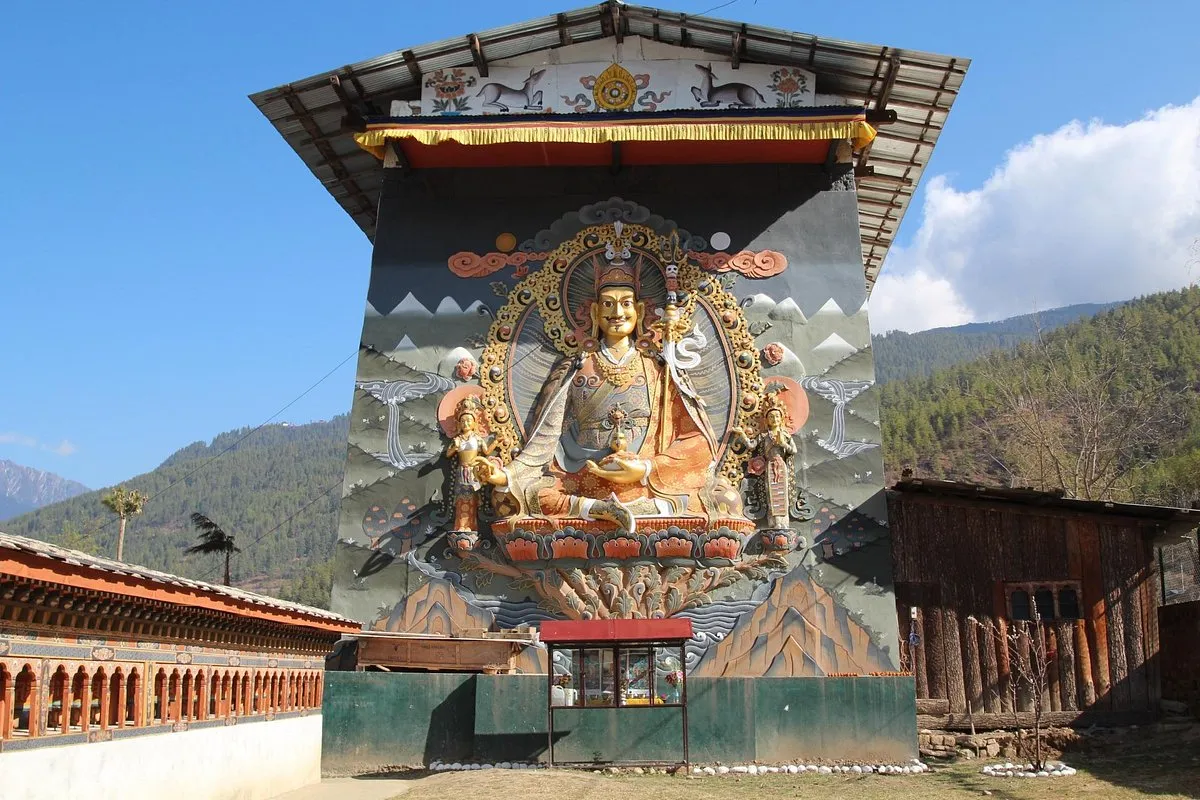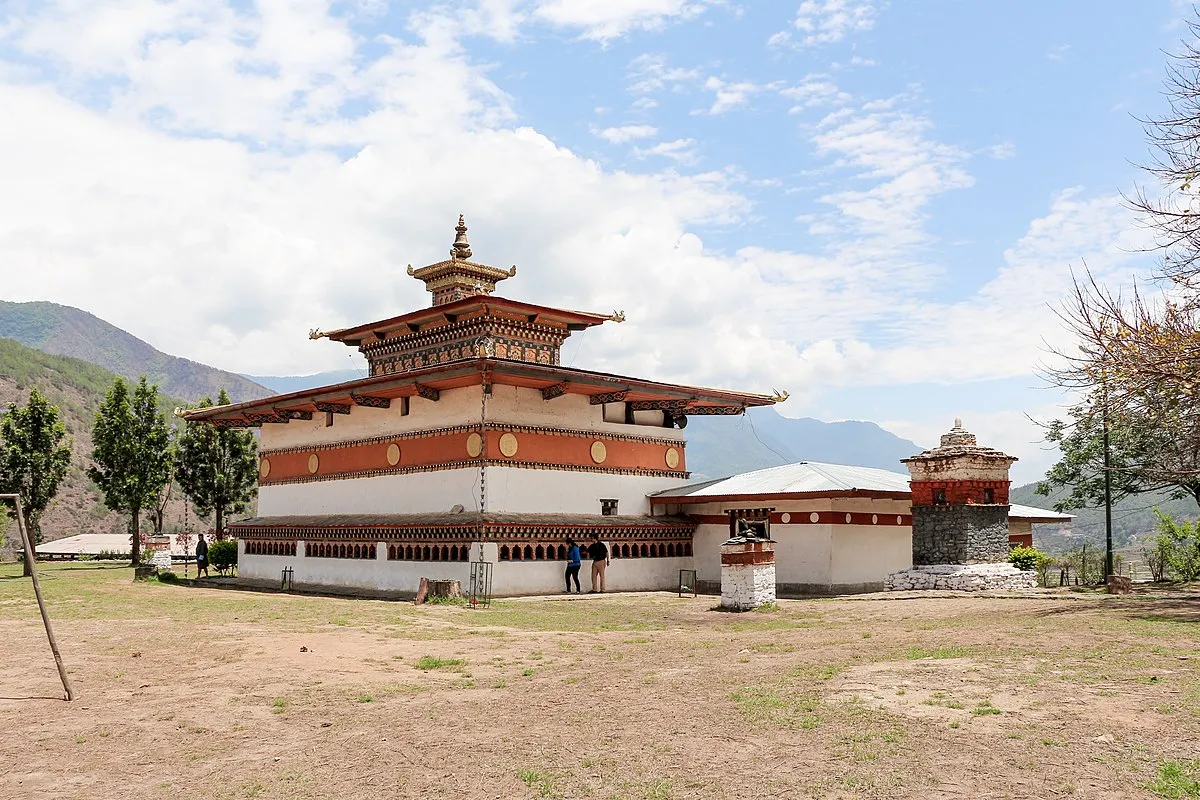1. Overview
Choki Traditional Art School, located just outside Thimphu, Bhutan, is a unique institution dedicated to preserving Bhutan’s rich heritage of traditional arts and crafts. Founded in 1999 by Dasho Choki Dorji, the school offers free education, accommodation, and meals to underprivileged youth, focusing on the 13 traditional arts of Bhutan (Zorig Chusum). The school not only helps preserve Bhutanese culture but also provides young Bhutanese the opportunity to learn valuable artistic skills, empowering them for a brighter future.
Location – Google Maps Link
2. History
- Established in 1999 by Dasho Choki Dorji, a former civil servant and traditional artist
- Started with five students and expanded to accommodate up to 160 students annually
- Offers a six-year curriculum integrating traditional arts with general education
- Focuses on 13 traditional Bhutanese arts, including weaving, painting, sculpture, wood carving, and embroidery
- The school provides free accommodation, meals, and tuition to its students
- Emphasis on preserving Bhutanese culture, especially traditional arts and crafts
- The school operates a handicraft shop where students’ work is sold to fund the school
- Graduates of the school often go on to work in temple restoration, art galleries, and teaching
- The school hosts cultural events, including exhibitions, to showcase students’ work
- The school has received support from various international organizations to continue its work
3. What Makes Choki Traditional Art School Popular?
Choki Traditional Art School is popular for its hands-on approach to teaching Bhutanese arts and crafts, combined with its commitment to helping underprivileged youth. It is one of the few places where visitors can observe traditional Bhutanese craftsmanship in action, and the opportunity to purchase directly from students supports both the school and the preservation of Bhutanese culture. The school has earned recognition for its contribution to maintaining Bhutan’s cultural identity while providing educational opportunities to the next generation of artisans.
4. Overall Ratings (1 to 5 Stars)
Overall Rating: ⭐⭐⭐⭐⭐ (5/5)
Cultural Significance: ⭐⭐⭐⭐⭐ (5/5)
Educational Value: ⭐⭐⭐⭐⭐ (5/5)
Scenic Beauty: ⭐⭐⭐⭐☆ (4/5)
Accessibility: ⭐⭐⭐⭐☆ (4/5)
5. Weather
Best Time to Visit: March to May and September to November
Temperature Range: 10°C to 20°C
These months offer clear skies and moderate temperatures, perfect for both indoor and outdoor activities.
6. Nearest Five Hotels
- Taj Tashi Bhutan – Luxurious stay with traditional Bhutanese architecture
- Le Méridien Thimphu – Stylish and modern, ideal for travelers seeking comfort
- Hotel Osel – Comfortable and affordable option with central location
- Norkhil Boutique Hotel & Spa – Offers a peaceful atmosphere and wellness options
- Hotel Druk – Located in the heart of Thimphu with convenient access to nearby attractions
7. Timings
Open: Monday to Saturday
Hours: 9:00 AM – 5:00 PM
Note: Closed on Sundays and public holidays
8. Time Required to Visit
Visit Duration: 1 to 2 hours
Time to explore the campus, observe live craft demonstrations, and interact with students.
9. Entry Fees & Ticket Booking Details
Entry Fee: Free
Booking: Not required; visitors are welcome during open hours
10. Things to See & Do
- Watch students engage in traditional Bhutanese crafts like weaving, painting, and sculpture
- Explore the exhibition area showcasing student artwork
- Purchase handcrafted textiles, wood carvings, and other artifacts
- Learn about the cultural significance of each traditional art form
- Attend cultural events or workshops held at the school
11. Best Time to Visit
Season: Spring and Autumn
Time of Day: Morning for fewer visitors and better lighting for photos
Day of Week: Weekdays for a quieter experience
12. Nearest Parking Spots
- On-site parking available for visitors
- Additional parking available along the main road or at nearby attractions
- Easily accessible via taxi or private vehicle from Thimphu city center
13. Tips for Visitors
- Wear comfortable shoes, especially if planning to walk around the outdoor areas
- Respect the students’ workspaces—observe quietly and ask permission before photographing
- Consider purchasing artifacts to support the students and the school
- Check the school’s website or contact them in advance for any special events or exhibitions
- Bring water and sunscreen as the area can get sunny during the day
14. How to Reach the Place
By Car: A 15–20-minute drive from central Thimphu to the school in Kabesa
By Taxi: Taxis are readily available in Thimphu; agree on a return fare
By Tour: Included in cultural and artisan-focused tour packages
15. Nearby Attractions to Combine for the Visit
- Sangaygang Viewpoint – A scenic spot for views of Thimphu Valley
- Tashichho Dzong – Bhutan’s administrative and spiritual center
- Buddha Dordenma – A massive Buddha statue with panoramic views
- Changangkha Lhakhang – A historic temple with spectacular valley views
- Simply Bhutan Museum – An interactive museum showcasing traditional Bhutanese life



